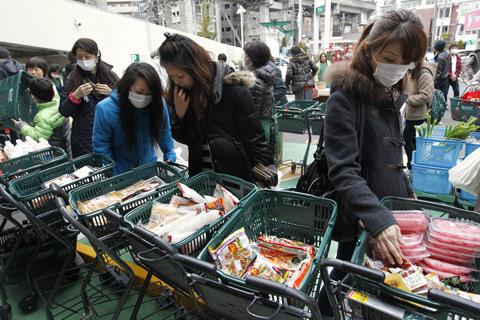World Food Supply Threatened by Japan Nuclear Radiation
By Ethan A. Huff | Mar 18, 2011

Fallout from the current meltdown occurring at Japan’s Fukushima Daiichi nuclear plant, which was hit by the 9.0+ mega earthquake and tsunami last Friday, could contaminate the world’s food supply with toxic radiation, say experts. If the plant’s radioactive particles get caught in the jet stream and travel the world over, they will end up contaminating crops and grazing fields.
“The explosions could expose the population to longer-term radiation, which can raise the risk of cancer. These are thyroid cancer, bone cancer and leukemia. Children and fetuses are especially vulnerable,” said Lam Ching-wan, a chemical pathologist at the University of Hong Kong. “For some individuals even a small amount of radiation can raise the risk of cancer. The higher the radiation, the higher the risk of cancer.”
According to experts, there are many ways in which radioactive particles can travel. They can bind to rain droplets and fall with the rain, or they can just travel in the wind and be inhaled by animals and humans. Either way, radioactive particles eventually end up embedding in soil and water where they contaminate the environment, wildlife, crops, and drinking water. Even cows grazing on radioactive grass will produce dangerous milk unsuitable for consumption.
As of this writing, officials have declared that the situation in Japan is currently a Level Six on the International Nuclear and Radiological Event Scale (INES). The scale ranges from Level One, which represents little danger, to Level Seven, which represents a large release of radioactive material where widespread environmental and health effects are to be expected.
The Fukushima plant has experienced four major explosions thus far since the earthquake, and Japanese Prime Minister Naoto Kan has urged everyone within roughly 20 miles of the plant to remain indoors with their windows and doors closed.
All reactors at the site are confirmed or suspected to have gone into partial core meltdown at this point. Radiation levels have begun escalating in Tokyo, and radioactive particles are expected to spread out towards the Pacific Ocean in the coming days, according to weather simulation models released by South Korea’s Meteorological Administration.
Learn more: http://www.NaturalNews.com/031729_food_supply_radiation.html#ixzz1GteL6zMT















